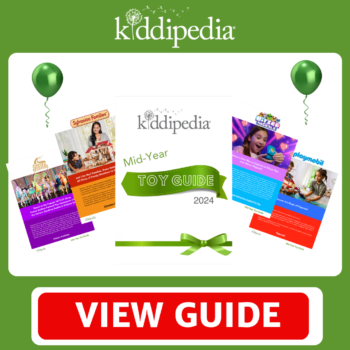1. Pack lunch for yourself too.
While it is essential to pack adequate lunches and snacks for your kids’ lunchboxes, it is just as important to pack food for yourself too, especially when you know that you will be away from home for a long period of time. Generally speaking, if we don’t have healthy food available when we need it (i.e. when we are hungry), this leaves us vulnerable to choosing quick and often discretionary food options. Furthermore, it can result in picking at the scraps of our kids’ food, with no real appreciation for quantity and/or type of food we are eating.
Packing your own lunchbox does not need to comprise of a 3-course, 5-star meal – a simple chicken & salad sandwich will suffice! If that doesn’t tickle your fancy, some other simple options include cottage cheese, tomato and avocado on vitaweats, or even just a tuna salad.
2. Choose low GI carbohydrates.
Carbohydrates are our main fuel source and parents need fuel. While they are often blamed for the rise in chronic disease in the Western World, arguably, the issue is not in eating carbohydrates; the issue lies in the types and quantities that many individuals are consuming. Therefore, instead of demonising an entire food group, we should be focusing on choosing healthier carbohydrate options and moderating portions.
One way of categorising carbohydrates is by their Glycaemic Index (aka GI). Glycaemic index refers to the rate at which a carbohydrate food raises blood sugar levels. High GI foods cause a rapid increase in blood sugar levels, quickly followed by a rapid decline. Ever felt like you could run a marathon after eating really sweet food (e.g. lollies or chocolate) because you feel so full of energy, but then crashed soon after? This is what happens with excess consumption of high GI carbohydrates. Therefore, it is in our best interest (mentally & physically) to consume lower GI carbohydrates. Examples of low GI carbohydrates include:
- Whole grains e.g. grainy bread, oats, Weetbix, brown rice
- Dairy e.g. milk, yoghurt, cheese
- Legumes e.g. lentils, chickpeas, kidney beans
- Fruit e.g. apple, apricot, banana, orange (be mindful that the GI of different fruit varies significantly e.g. melon is high GI)
3. Eat breakfast every day.
Breakfast is often referred to as, “the most important meal of the day”. While I tend to think that every meal is as important as another, breakfast is definitely a fundamental component of a healthy diet. Breakfast is an opportunity to consume a low GI carbohydrate to give us long-lasting energy for the day, and it can also be a great source of fibre, protein, healthy fats and vitamins and minerals. Additionally, skipping breakfast commonly leads to the over-consumption of less healthy foods later in the day. Some fantastic breakfast options include:
- Weetbix + piece of fruit + handful almonds + low-fat milk
- Porridge made with low-fat milk + chia seeds + cinnamon + berries
- Eggs (omelette/scrambled/poached) + mushrooms + tomato + avocado on grainy bread
- Smoothie made with low-fat milk + banana + oats + peanut butter
4. Drink mostly water and drink lots of it.
One of the simplest ways of knowing how much you should be drinking is by monitoring your own hydration status. A practical method of doing so is by checking your urine colour. Essentially, we want to aim for mostly straw-coloured urine, with dark yellow or brown urine indicating dehydration (i.e. the lighter, the better). Dehydration can have massive implications on our physical and mental performance, from our ability to exercise efficiently to our cognitive function. If you struggle to drink enough water, here are few tips for increasing it:
- Try adding fresh lemon or lime
- Mix things up with drinking soda or mineral water
- Always carry a water bottle on you
- Drink a glass of water with every meal
5. Choose healthy snacks for your kids.
If you do happen to pick at your kids’ snacks, you can rest assured you are eating nutritious food if they are only eating healthier options. Furthermore, it can enable you to eat with your kids, role modelling healthy eating behaviour for them to mimic. If kids don’t see their parents eating nutritious foods, in some ways it can validate their refusal to eat it too.
6. Eat the rainbow!
Eat as many coloured vegetables you can. Full of fibre, vitamins and minerals, veggies provide countless health benefits. Statistically, most Australians don’t eat enough of them, o it is something that most people would benefit from increasing. Moreover, if you eat your vegetables, your kids are more likely to eat them too!
7. Play outside with your kids.
Join in the fun! Not only will this expose you to Vitamin D from the sun, it can be a great way to sneak in some physical activity when structured exercise is not always feasible for yourself. Kick a ball, play tips, shoot hoops – whatever your heart (and your kids hearts) desires!
8. Don’t discount the small things. Many small things add up to big things.
Swap your bread & cereal food for whole grain options. Increase your vegetable intake. Pack a piece of fruit and some nuts in your bag. Choose to drink water more often than other beverages. Take the stairs. Park the car further away. Use a standing desk instead of sitting.
All of these small things may sound insignificant individually, but when added up, they can have a profound impact on our health – “big doors swing on small hinges”.
Holly Edstein
Accredited Practising Dietitian
You may also like to read:









